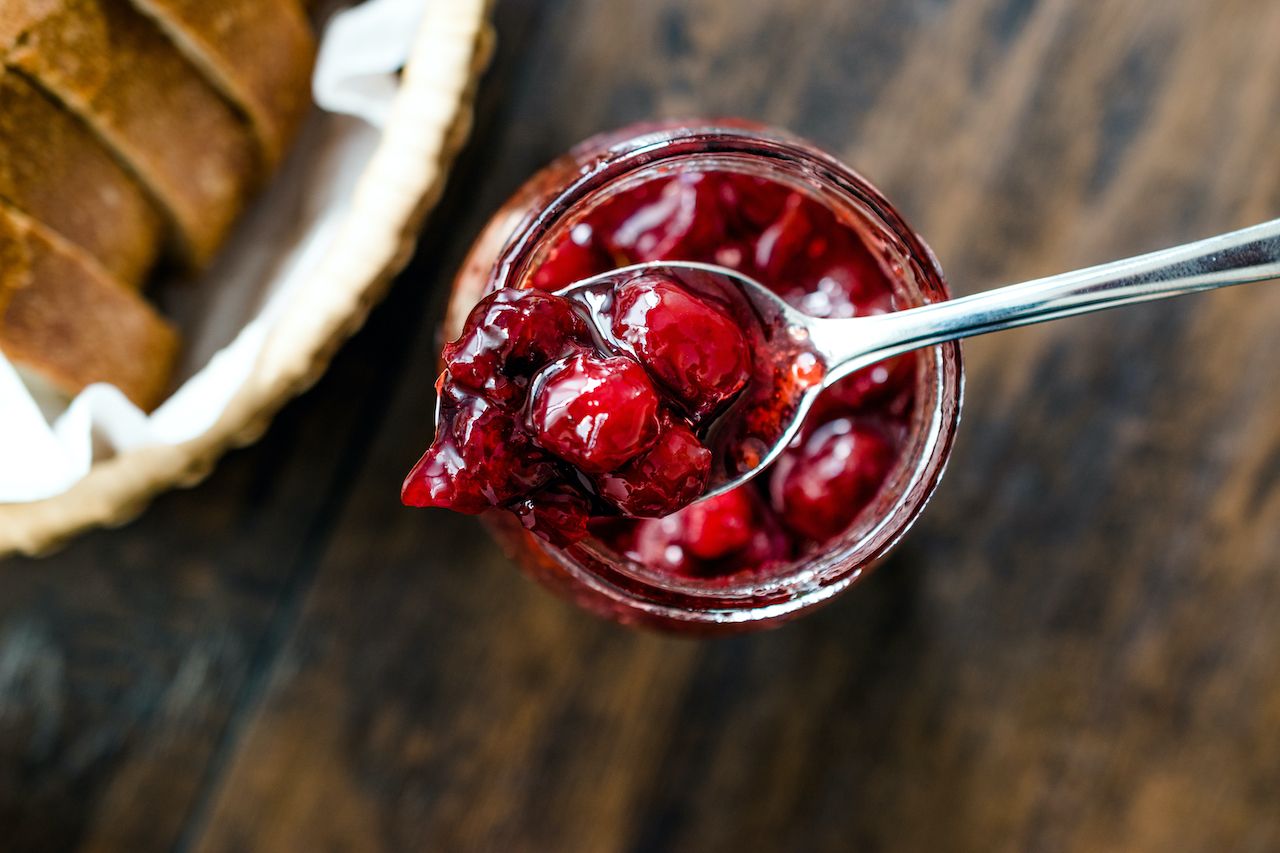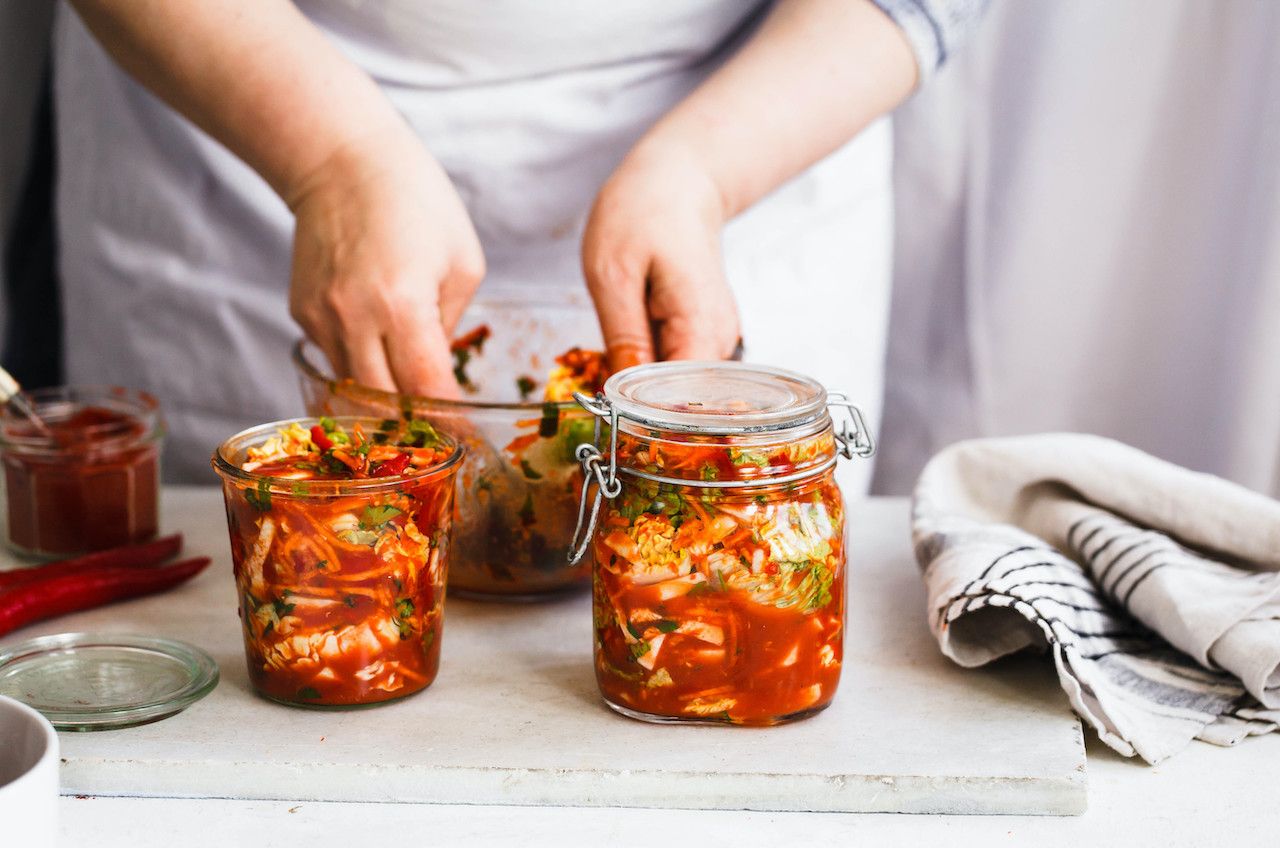You’ve already alphabetized your books, decluttered your closet, and your house has never been cleaner. You’d love to spend some quality time in your kitchen (and with all that bulk food you probably just bought at the grocery store), but daily bouts of baking coupled with a lack of space for a decent workout will likely leave you feeling lethargic and wishing you’d stayed away from the stove. Now is the time to learn a new culinary skill. Here, we look at preserving, pickling, and drying, three ways to keep you in the kitchen — and make your food last longer.


How to Preserve, Pickle, and Dry Foods in Your New Free Time
Preserving

Photo: Alp Aksoy/Shutterstock
What:
Broadly speaking, when it comes to preserving, you’re generally dealing with fruit. There are three common types: jam, jelly, and preserves. Jam involves mashed up fruit, jelly just uses the juice, and preserves attempt to keep the fruit whole, or at least in larger chunks. Jelly requires pectin — something you probably don’t have in the pantry, but most people will be able to produce jam and preserves without taking a trip to the store.
Why:
Who doesn’t love jam on toast as a comfort food? And preserved figs, apples, pears, or ginger all work well to liven up a platter of crackers and cheese. Jams can also be used in pies, cakes, and cookies, if you’ve simultaneously decided to teach yourself to bake. It’s also a great way to use up fruit that is just a touch too ripe to enjoy raw.
How:
This recipe for strawberry jam is a great place to start. It requires a fairly simple process of slow-cooking the fruit until the moisture content reduces — it takes less than an hour. Refrigerator jams don’t require stringent jar sterilization and can keep for about a month in the refrigerator or for three months in the freezer.
What do I need?
About four cups of ripe fruit, but not overripe or rotten. A pan large enough to simmer the fruit. Three cups of sugar, a little lemon juice, and enough clean jars to store the jam or preserve. Optional: spices, chilli, and/or alcohol (to use in the jam, not to drink if your first batch goes wrong).
Pickling

Photo: casanisa/Shutterstock
What:
Pickling, a preservation technique most commonly applied to all sorts of vegetables, not just cucumbers, lengthens the shelf life of perishable foods through fermentation. Cabbage (as in Korean kimchi), carrots, tomatoes, cauliflower, and peppers — as well as eggs and even fish, like herring — can all be pickled either in a brine or through submersion in vinegar.
Why:
Crisp, zingy pickles can really brighten up a dish, whether it’s a salad, gourmet hot dog, rich curry, or just your lockdown lunchtime sandwich. It’s also a great way to ensure you’ll still have vegetables in your pantry in the weeks to come.
How:
Fermented pickles are more difficult to master and require a tricky canning process in order to be safely stored for several months. But “quick pickles,” also known as “refrigerator pickles,” can easily be made in less than half an hour using ingredients and equipment that almost every home cook will have at hand. Allow them to sit for a day or two before cracking open the jar. Quick pickles will keep for about a month if stored cold.
What do I need?
Pretty much any vegetable can be pickled, although vegetables with sturdier skins tend to work better. Cucumber and onion are the classics, but don’t forget ginger, carrots, peppers — even something more delicate like a tomato can be pickled if kept whole. You’ll also need vinegar (almost every type will work, save for balsamic), water, sugar, salt, a saucepan, and some sterilized jars. Experiment with the herbs and spices you already have in your cabinets to liven up your brine, including coriander seed, turmeric, chilies, garlic, oregano, thyme, and the classic, dill.
Drying

Photo: Gamzova Olga/Shutterstock
What:
This method of preservation involves dehydrating food. Removing all the moisture from your ingredient of choice, whether that’s slices of mango or strips of cod, inhibits the growth of bacteria, meaning the food won’t rot if it’s stored over a long period of time. Drying was especially popular before the advent of refrigeration. Sun drying and smoking were once common methods of drying food but it can also be done in a food dehydrator or an oven.
Why:
One of the main reasons you might want to master drying of foodstuffs is for the satisfaction of learning this tricky skill. It is definitely the most difficult method of the three and also the one that takes the most time — something you might have plenty of. But it will also guarantee a store of food you might need to have on hand if you’re required to stay inside for a long period of time.
How:
There are three main ways to dry food — in the sun, in a dehydrator, or in the oven. Assuming most people don’t have a food dehydrator on hand and many don’t have the right weather to try the classic sun-drying method, you’re likely going to be using your oven for the process. All sorts of foodstuffs can be dried: meat, herbs, vegetables, and fruit (like these oven-dried apple slices) — the latter are best blanched first to maintain their color and flavor.
What do I need?
In the absence of hot, sunny days or the aforementioned dehydrator, you need an oven that can be set at a very low heat. If your oven can’t be set as low as 140 degrees (or on a “keep warm” setting) then it’s going to cook rather than dry. Air flow is important in the drying process, so it’s best to help out the oven with an electric fan — prop the door open and set up the fan to do its work. The other things you’ll need are time and plenty of money for the electricity bill: It takes around eight hours to dry food in the oven.
Want to learn more?
Like most hobbies, pickling, preserving, and drying can be as easy or as involved as you’d like. Tomes have been written on the ancient arts of preserving foodstuffs, dispensing tips, tricks, and, of course, recipes for making the perfect jams, chutneys, preserves, and pickles. Here are a few to seek if you’d like to learn more:
Jam Session: A Fruit-Preserving Handbook — Chef Joyce Goldstein shares 75 recipes for her favorite jams, jellies, chutneys, and compotes.
WECK Small-Batch Preserving: Year-Round Recipes for Canning, Fermenting, Pickling, and More — There are 100 inventive recipes in this beautifully illustrated book, which covers jams, kimchi, sauerkraut, and other pickles and preserves.
Jams, Preserves and Chutneys Handbook — Before launching into some delectable recipes, culinary legend Marguerite Patten offers all manner of techniques and troubleshooting tips for sweet and savory preserves.
Food Drying with an Attitude: A Fun and Fabulous Guide to Creating Snacks, Meals, and Crafts — Resources for food drying are scarce, but this 160-page guide covers everything from how to safely dry and dehydrate food, to nutritional information, and, of course, plenty of recipes.